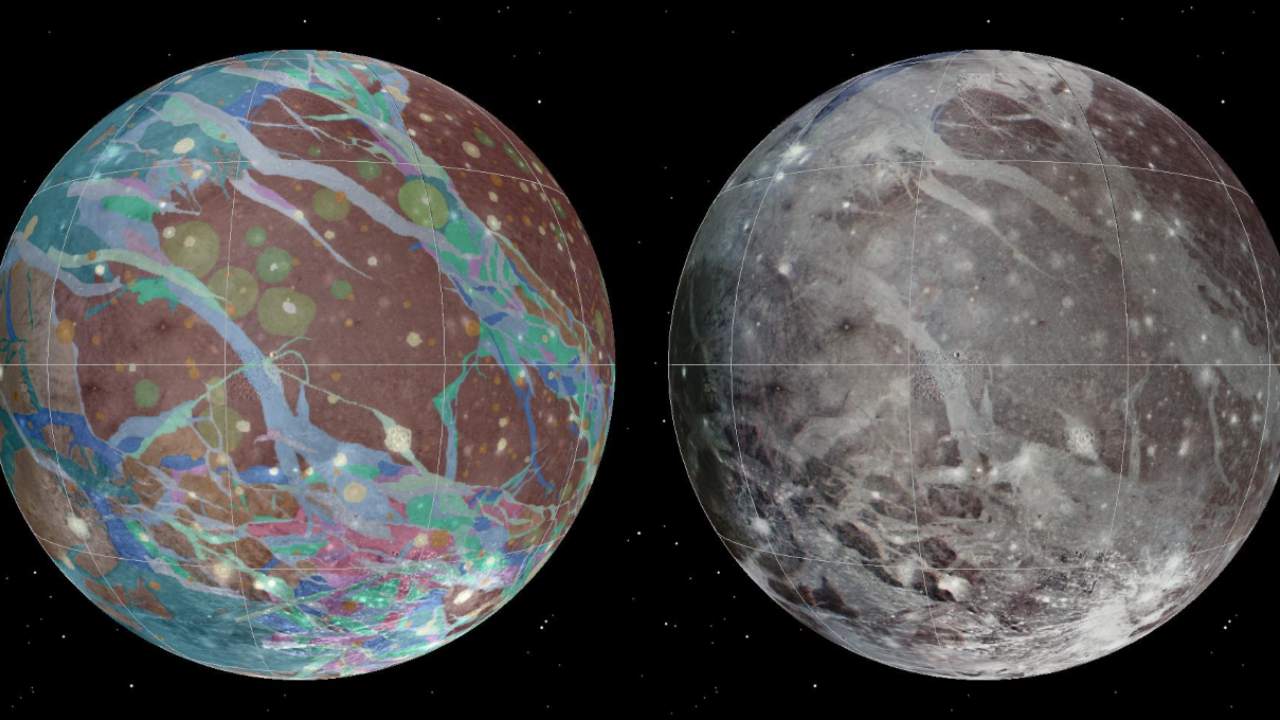
NASA’s Juno spacecraft will take a closer look at Jupiter’s moon Ganymede- Technology News, Firstpost
FP TrendingJun 07, 2021 19:35:04 IST
The Juno spacecraft by the National Aeronautics and Space Administration (NASA) will have back-to-back flybys and will get a closer look at Jupiter’s moon Ganymede. According to Space.com, a good view of Ganymede has not been captured since the Galileo spacecraft swung past it in the year 2000. Ganymede, which is larger than Mercury, is the only moon that has a magnetic field. Juno is going to come within 1038 km (645 miles) of the largest moon in the solar system.

Left to right: The mosaic and geologic maps of Jupiter’s moon Ganymede were assembled incorporating the best available imagery from NASA’s Voyager 1 and 2 spacecraft and NASA’s Galileo spacecraft. Credit: USGS Astrogeology Science Center/Wheaton/NASA/JPL-Caltech
As mentioned in a blog by NASA’s Jet Propulsion Laboratory (JPL), Juno will get closer to Ganymede on 7 June at 11:05 pm IST (1:35 pm EDT).
It further mentions that with the help of the Juno spacecraft, researchers will get an insight into the ionosphere, ice shell, composition, and magnetosphere of Jupiter’s moon.
Scott Bolton, principal investigator of Juno from San Antonio’s Southwest Research Institute said that there will be special equipment on Juno that will make the researchers see Ganymede in a way that has never been possible before. Bolton added that by flying so close to Jupiter’s moon, they will help the next generation of missions including the JUpiter ICy moons Explorer [JUICE] by the European Space Agency (ESA) and Europa Clipper by NASA.
The navigation camera in the Stellar Reference Unit (SRU) of Juno will not only help the spacecraft to follow its path but also be used to collect images to investigate the high-energy radiation environment in Ganymede.
Three hours before the Juno spacecraft will make its closest approach, its equipment is going to start collecting data.
In order to get details about its water-ice crust, Ultraviolet Spectrograph (UVS), Microwave Radiometer’s (MWR), and Jovian Infrared Auroral Mapper (JIRAM) instruments will be used for the purpose. A radio occultation experiment will also be performed with the help of signals received from the X-band and Ka-band radio wavelengths of Juno. This experiment will investigate Ganymede’s ionosphere.
Stay connected with us on social media platform for instant update click here to join our Twitter, & Facebook
We are now on Telegram. Click here to join our channel (@TechiUpdate) and stay updated with the latest Technology headlines.
For all the latest Technology News Click Here
For the latest news and updates, follow us on Google News.

